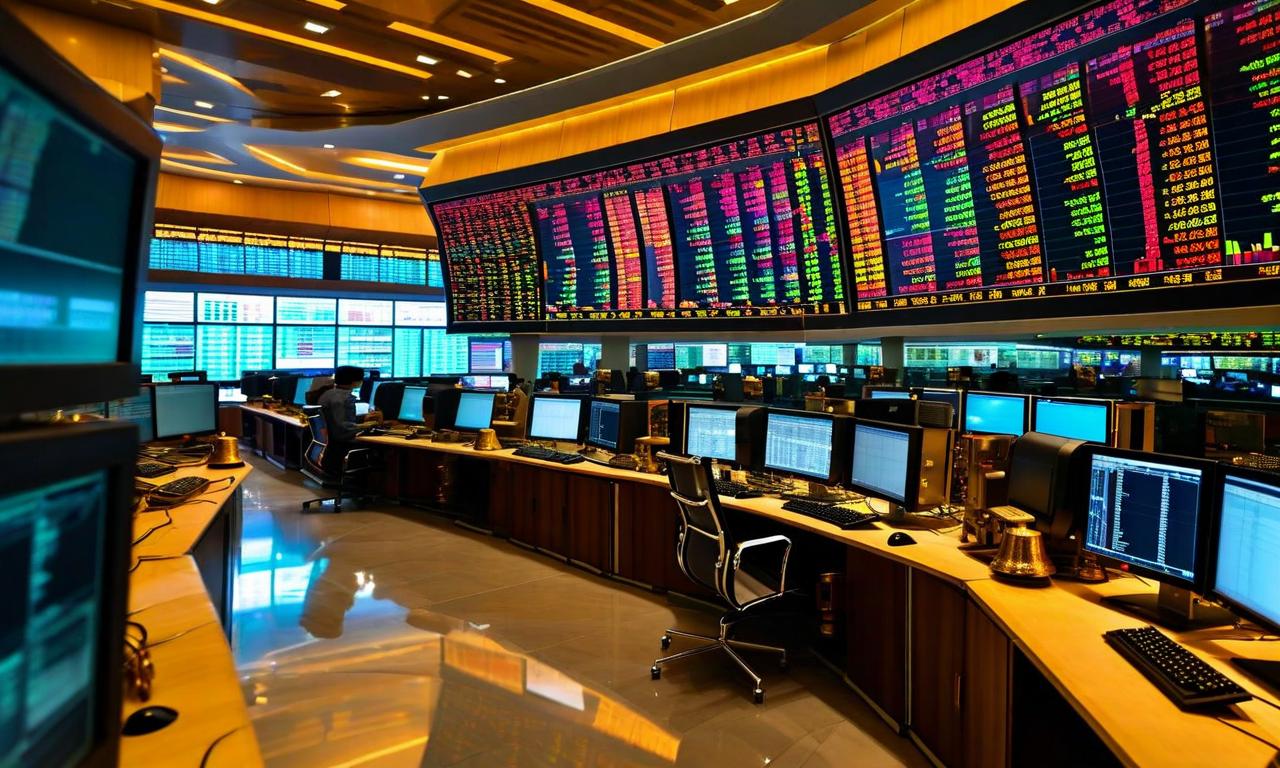Indian Equity Markets: Balancing Act Amidst Mixed Factors
Indian equity markets are navigating a complex landscape with mixed factors. Positive influences include benign monetary policy and fiscal support, while negative factors involve slowing global growth and US tariffs. Capital flows show strong domestic inflows but foreign outflows. Sector-wise, IT services remain underweight, while metals, financial services, and consumer services show potential. FMCG and auto sectors face challenges. Corporate earnings growth has slowed from 35% to 8-10% since September. Given global uncertainty, a multi-asset investment strategy is recommended.

*this image is generated using AI for illustrative purposes only.
Indian equity markets have been navigating a complex landscape, characterized by a delicate balance of various economic factors. Anand Shah from ICICI Prudential AMC provides insights into the current market scenario, highlighting key sectors and trends shaping the investment landscape.
Market Dynamics
The Indian equity markets have remained range-bound in recent weeks, influenced by a mix of positive and negative factors:
Positive Factors:
- Benign monetary policy
- Fiscal support (GST and income tax cuts)
Negative Factors:
- Slowing global growth
- US tariffs pressuring export-oriented businesses
Capital Flows
The market is witnessing an interesting pattern in capital flows:
| Inflows | Outflows |
|---|---|
| Strong domestic inflows | Foreign outflows |
| Ample supply from IPOs | |
| Private equity selling |
Sector Outlook
Underweight Sectors
Shah remains underweight on IT services, which have underperformed for over three years. The sector's recovery depends on global spending improvement.
Sectors with Potential
- Metals: Benefiting from protective policies
- Financial Services: Experiencing structural growth
- Consumer Services: Faster growth observed in:
- Telecom
- Aviation
- Finance
Sectors Facing Challenges
- FMCG: Low growth due to full market penetration
- Auto Sector: Facing margin pressure from:
- Shift to SUVs
- Transition to EVs
Corporate Earnings
| Period | Earnings Growth |
|---|---|
| Previous 4 years | 35.00% |
| Since September | 8.00-10.00% |
Shah expects earnings growth to improve in the second half, with more meaningful growth anticipated in the future.
Investment Strategy
Given the global uncertainty, Shah emphasizes the importance of multi-asset portfolios, including:
- Gold
- Silver
- Bitcoin
- Commodities
Conclusion
The Indian equity markets are at a crucial juncture, balancing domestic strengths against global headwinds. Investors should closely monitor sector-specific trends and maintain a diversified portfolio to navigate the current market conditions effectively.






































